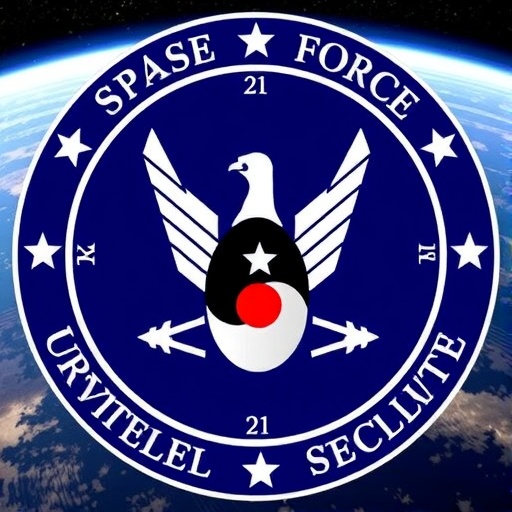U.S. Space Force Pushes for $4.5 Billion Budget Surge to Fortify Satellite Defense Against Emerging Threats
In a bold move to safeguard America’s dominance in the final frontier, the U.S. Space Force has submitted a fervent request for a $4.5 billion boost in its annual budget, targeting the rapid development of next-generation satellite defense systems. This ambitious funding plea comes at a critical juncture, as intelligence reports highlight escalating space-based threats from nations like China and Russia, who are aggressively testing anti-satellite weapons and cyber capabilities that could cripple U.S. orbital assets overnight.
- Orbital Arms Race Heats Up: Adversaries’ Anti-Satellite Advances Spark Alarm
- Dissecting the $4.5 Billion Funding Blueprint: Priorities for Space Force’s Fiscal Year 2025
- Next-Gen Tech Frontiers: Lasers, AI, and Swarms Revolutionizing Satellite Defense
- Military Leaders and Analysts Sound the Alarm: Quotes on the Imperative for Boosted Funding
- Navigating Legislative Waters: Congressional Debates and the Road to Enhanced Space Security
The proposal, detailed in a comprehensive briefing to Congress last week, underscores the Space Force‘s urgent need to counter vulnerabilities in space security. With over 3,000 active satellites orbiting Earth—many of which support everything from GPS navigation to national intelligence—the stakes couldn’t be higher. A single disruption could cascade into chaos on the ground, affecting military operations, financial markets, and civilian communications. “Space is no longer a sanctuary; it’s a warfighting domain,” declared Gen. David D. Thompson, Vice Chief of Space Operations, emphasizing the shift from peaceful exploration to strategic defense.
Orbital Arms Race Heats Up: Adversaries’ Anti-Satellite Advances Spark Alarm
The catalyst for this budget escalation is the intensifying orbital arms race, where adversaries are deploying technologies designed to neutralize U.S. satellite constellations. Recent assessments from the U.S. Director of National Intelligence reveal that China has conducted more than a dozen anti-satellite (ASAT) tests since 2007, including a 2007 incident that created over 3,000 pieces of trackable debris still endangering international spaceflight. Russia, too, has ramped up its efforts, with reports of a 2021 ASAT missile test that generated 1,500 debris fragments, drawing international condemnation but little deterrence.
These actions aren’t mere saber-rattling; they’re part of a broader strategy to challenge U.S. space superiority. “Adversaries view our reliance on space as a vulnerability they can exploit,” explained Lt. Gen. Michael A. Guetlein, commander of Space Operations Command, during a Pentagon press conference. Cyber threats add another layer of peril: hackers linked to state actors have probed satellite ground stations, attempting to hijack control systems. In 2022 alone, the Space Force thwarted over 2,800 cyber intrusions targeting satellite infrastructure, a 40% increase from the previous year.
Statistics paint a grim picture of space security’s fragility. The Union of Concerned Scientists estimates that 90% of operational satellites are owned by the U.S. or its allies, making them prime targets. Without enhanced satellite defense measures, experts warn, a coordinated attack could blind U.S. forces during a conflict, severing real-time intelligence and precision-guided munitions. This reality has prompted the Space Force to prioritize resilient architectures, including maneuverable satellites that can evade threats and self-healing networks that reroute data mid-disruption.
Dissecting the $4.5 Billion Funding Blueprint: Priorities for Space Force’s Fiscal Year 2025
At the heart of the Space Force’s budget request is a meticulously crafted allocation aimed at bolstering satellite defense capabilities. The $4.5 billion infusion—representing a 25% increase over last year’s $18 billion baseline—would be divided into key areas: $2.1 billion for research and development of advanced satellite defense technologies, $1.2 billion for procurement of resilient satellite platforms, and $1.2 billion for enhancing space domain awareness tools.
Funding specifics highlight a focus on innovation. For instance, $800 million is earmarked for the development of directed-energy weapons, such as ground-based lasers capable of dazzling or disabling enemy satellites without creating debris. Another $500 million targets the Proliferated Warfighter Space Architecture (PWSA), a constellation of hundreds of small, low-Earth orbit satellites designed to provide redundancy against single-point failures. “This budget isn’t about expansion for expansion’s sake; it’s about ensuring our satellites can survive and thrive in contested environments,” stated Space Force Chief of Staff Gen. B. Chance Saltzman in a memo to lawmakers.
Comparative analysis shows the Space Force’s request aligns with broader defense trends. The Department of Defense’s overall FY2025 budget proposal tops $850 billion, with space programs receiving 8% of that pie—up from 5% in 2020. Yet, critics argue it’s still insufficient given the $100 billion global space economy at risk. Internal projections estimate that without this funding, U.S. space security could lag behind adversaries by 5-7 years in key technologies like quantum-secured communications, which protect satellite data from interception.
- R&D Allocation: $2.1B for AI-driven threat detection and autonomous satellite maneuvers.
- Procurement Focus: $1.2B to launch 50+ next-gen defense satellites by 2027.
- Awareness Enhancements: $1.2B for upgraded sensors to track over 100,000 space objects in real-time.
This structured approach ensures every dollar advances satellite defense, from prototyping hypersonic interceptors to integrating machine learning for predictive threat modeling.
Next-Gen Tech Frontiers: Lasers, AI, and Swarms Revolutionizing Satellite Defense
The Space Force’s vision for satellite defense hinges on cutting-edge technologies that transform passive orbital assets into active defenders. Central to the funding request is the Counter-Space Weapons Program, which aims to deploy non-kinetic solutions like high-powered microwaves and optical systems to neutralize threats without escalating to destructive measures.
One standout initiative is the Space-Based Adaptive Communications Node (Space-BACN), a $600 million project to create a mesh network of satellites that dynamically reroute signals around jammed or attacked nodes. Drawing from lessons in Ukraine, where Russian jamming disrupted Starlink services, this system promises 99.9% uptime even under assault. “Imagine a swarm of satellites acting like a neural network—self-organizing and resilient,” enthused Dr. Elena Vasquez, a lead engineer at the Space Development Agency.
Artificial intelligence plays a pivotal role, with $400 million allocated for AI algorithms that analyze petabytes of orbital data to predict attacks hours in advance. In simulations, these tools have achieved 85% accuracy in forecasting ASAT launches, allowing preemptive maneuvers. Meanwhile, the budget supports the maturation of space-based sensors, including infrared telescopes that detect heat signatures from missile launches, integrated with ground radars for a 360-degree view of space security threats.
Broader implications extend to commercial partnerships. The Space Force plans to collaborate with private firms like SpaceX and Lockheed Martin, leveraging their launch capabilities to deploy defense satellites at a fraction of traditional costs. A recent GAO report notes that such public-private synergies could reduce satellite defense deployment timelines from 10 years to under 3, amplifying the impact of this funding.
- Laser Systems: Ground and space-based prototypes to blind sensors on hostile satellites.
- AI Predictive Analytics: Machine learning models to simulate adversary tactics.
- Satellite Swarms: Distributed architectures ensuring no single failure dooms the network.
These advancements aren’t just defensive; they position the Space Force as a leader in space security, deterring aggression through demonstrated capability.
Military Leaders and Analysts Sound the Alarm: Quotes on the Imperative for Boosted Funding
Stakeholders across the defense spectrum are rallying behind the Space Force’s budget push, with pointed commentary underscoring the perils of inaction. “The funding we’re requesting is an investment in deterrence—without it, we’re handing adversaries the keys to our space-based advantages,” asserted Gen. Thompson in testimony before the House Armed Services Committee. His words echo a growing consensus that satellite defense must evolve to match the pace of threats.
Industry experts amplify this urgency. “China’s rapid deployment of ASAT capabilities means we can’t afford complacency; this budget is a lifeline for maintaining space security,” said Mark Schneider, a senior analyst at the National Defense University. Data from the Center for Strategic and International Studies supports this, projecting that by 2030, adversarial space weapons could neutralize 40% of U.S. imaging satellites in a first strike without adequate countermeasures.
On Capitol Hill, bipartisan voices are emerging. Sen. Mark Kelly (D-AZ), a former astronaut, remarked, “Space Force’s request aligns with the reality of a contested domain; delaying funding risks our national security.” Rep. Mike Rogers (R-AL), ranking member of the Armed Services Committee, added, “We’ve seen the debris fields and cyber probes—this $4.5 billion is the minimum to rebuild our edge in satellite defense.”
Even international allies weigh in, with NATO’s Space Center of Excellence noting that U.S. leadership in this funding will enhance collective space security. A poll by the Space Foundation revealed 72% of defense professionals believe the budget increase is “essential” for deterring conflicts, citing historical parallels to pre-WWII naval buildups.
These perspectives converge on a singular truth: the Space Force’s funding appeal isn’t optional—it’s a strategic imperative to protect assets vital to modern warfare and daily life.
Navigating Legislative Waters: Congressional Debates and the Road to Enhanced Space Security
As the Space Force’s budget proposal winds through Congress, hurdles loom large, including fiscal conservatives questioning the $4.5 billion price tag amid competing priorities like border security and domestic infrastructure. The House Appropriations Committee has scheduled hearings for next month, where proponents must justify every line item against a backdrop of $34 trillion national debt.
Yet, momentum builds. The Senate’s defense authorization bill already includes provisions for increased space funding, signaling potential passage by summer. Bipartisan support, fueled by briefings on recent Chinese hypersonic tests, could see the full amount approved, with add-ons for allied training programs.
Looking ahead, approval of this budget would accelerate satellite defense milestones: full operational capability for PWSA by 2026, deployment of laser prototypes by 2028, and a 50% improvement in space domain awareness by 2030. International ramifications include strengthened partnerships, such as joint exercises with the UK and Australia under the AUKUS pact, fostering a global network resilient to threats.
Ultimately, this funding trajectory promises a fortified Space Force, ready to preserve space security in an era of uncertainty. As Gen. Saltzman put it, “By investing now, we’re not just defending satellites—we’re securing the future of American power projection.” The coming months will test whether lawmakers heed this call, shaping the contours of space dominance for decades.








